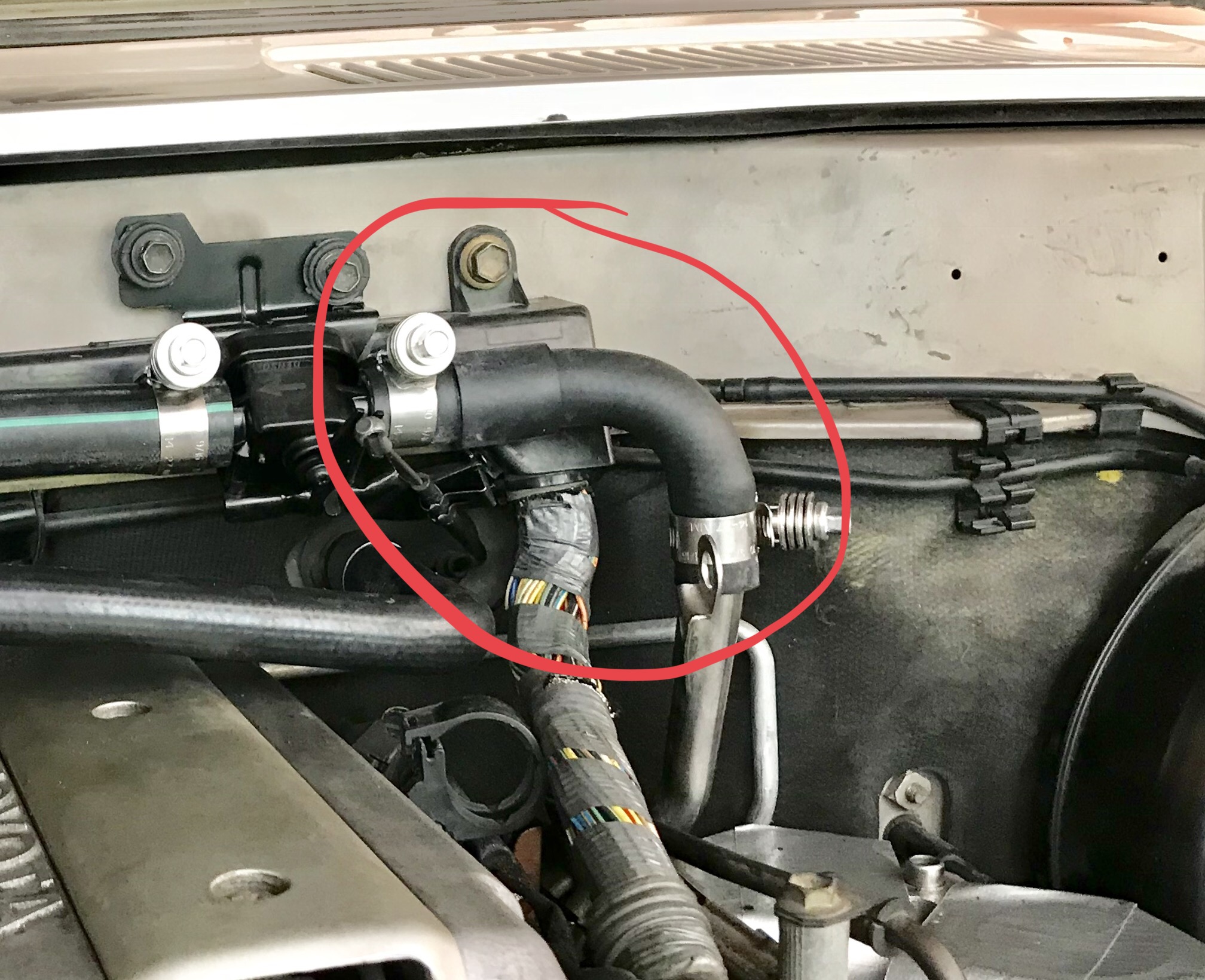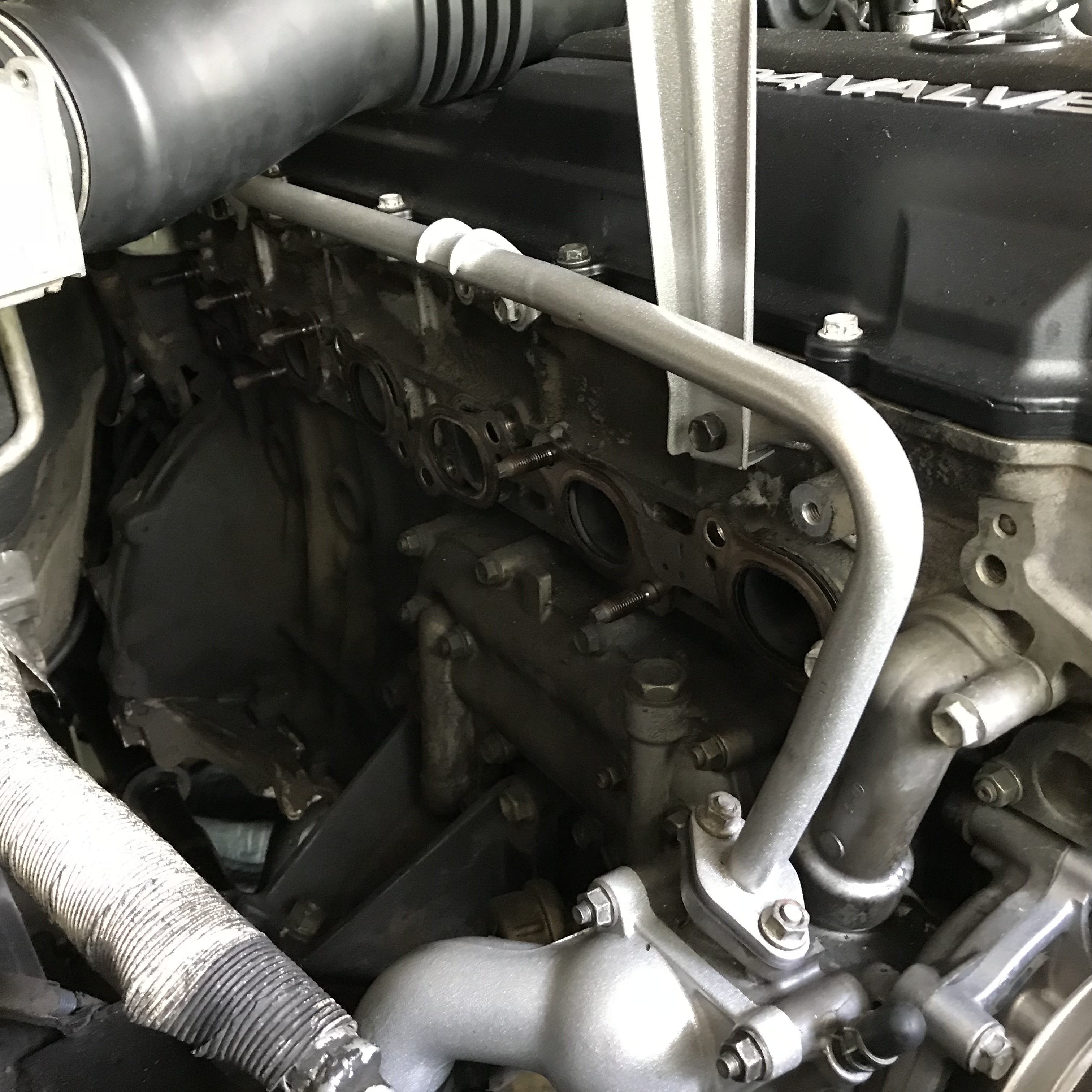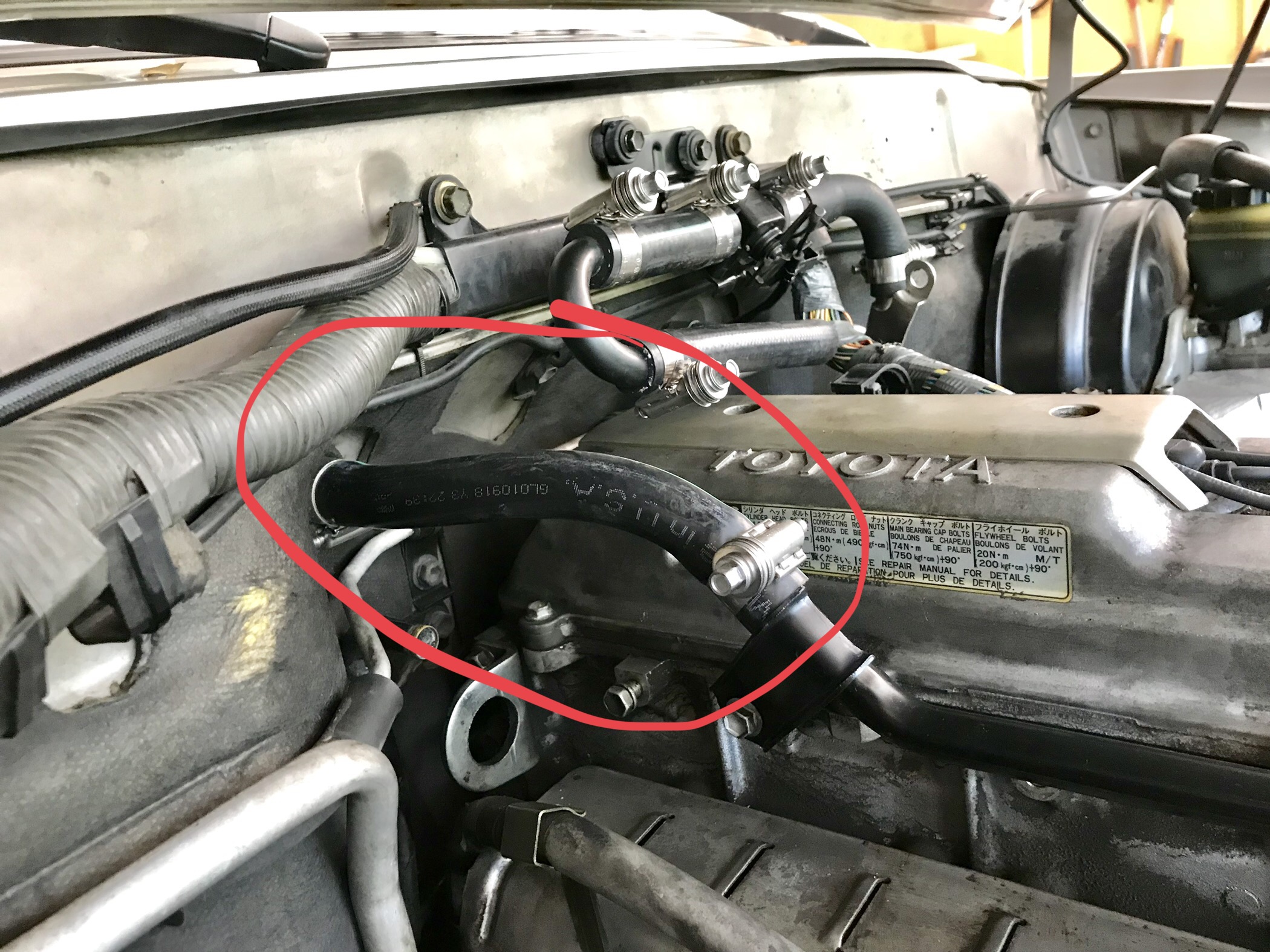I just wanted to give a quick picture tutorial on how I cleaned up my heater and coolant lines under the hood.
On my '93, this method reduced the number of heater hose connections from over 50, to about 10. It also makes the whole system much more simple. This method requires deleting the rear heater (obviously), PAIR system (which Toyota did on later models anyway), and the throttle body coolant lines. On colder-climate trucks, you may want to avoid deleting TB coolant lines.
Replacement parts needed:
- OEM Heater Control Valve (Toyota PN: 87240-60140)
- Gates 5/8" Green Stripe Hose (Wits' End, Solutions for Problems You Didn't Know You Had)
- ‘95 to ‘97 model one-piece thermostat housing to firewall hard pipe (Toyota PN: 87208-60161)
- PHH hardline top "Elbow" to heater valve (Toyota PN: 87245-60480)
- Breeze Constant Torque Hose Clamps for 5/8" Hose (Wits' End, Solutions for Problems You Didn't Know You Had)
- One piece "U" Shape heater valve hose (Toyota PN: 87245-60420 or Gates PN: 19161, trim to fit)
- Two high quality 5/16" lined silicone caps (HPS PN: RSCC-032-BLK) and clamps
To start off with, now is a good time to replace your Pesky Heater Hose ("PHH") and heater valve, since you're going to drain the cooling system and replace lines anyway. There are plenty of great write-ups on this portion of the procedure, so I won't include too much on that topic.
Slee - PHH (Toyota 80 Series Land Cruiser)
ExpeditionLCMajorcoolingoverhaul
The 90* heater elbow (Toyota PN: 87245-60480) goes on top of the PHH hard line. You
can bypass the hardline for even fewer connections, but I was afraid a rubber bypass line would rub somewhere and leak. Don't worry, I re-wrapped the engine harness after this photo was taken.
While you're in the DS front fender doing the PHH, pull the line for the "PHH Neighbor" that routes from the head to the intake manifold hardline.
Cap the "PHH Neighbor" port with one of your 5/16" rubber hose caps.
Now move to the water pump and pull the 5/16" line coming off the top of the thermostat housing.
Cap the thermostat port with the other 5/16" rubber cap.
At this point you have isolated the TB and can remove all of the abandoned TB coolant lines/connections at the front of the motor and under the intake manifold.
Next, we'll move to the Firewall Heater Hoses ("FHH"), heater valve, and thermostat hardline.
I followed this excellent writeup and video tutorial for FHH (
Project FJ4door: How I did my 80 series floor heater bypass fzj80 fj80 lc80 lx450). This is the meat and potatoes of the rear heater delete.
The majority of the rear heater deletes I have seen simply use a Gates 90* heater hose from a Dodge Cummins. This is what I did initially.
This setup still utilizes the factory "U" shaped hard pipe and simply deletes the rear heater hard pipe on the DS with the 90* Dodge heater hose.
Member
@LandCruiserPhil came up with a very clever one-piece solution from Toyota/Gates (
Rear Heater Bypass Hose - Land Cruiser Products - LCP). This converts the "U" shaped hardline to a one-piece hose, and reduces the number of connections at the firewall.
Finally, the '93 and '94 trucks had two-piece hard pipe and multiple connections from the thermostat to the firewall because of the PAIR system.
If you delete the PAIR system, you can run a one-piece hardline (Toyota PN: 87208-60161) and regular Gates 5/8" green stripe directly from the firewall to the hard pipe. This also deletes the PS portion of the rear heater at the firewall.
That's about it! Please let me know if you have any questions.















